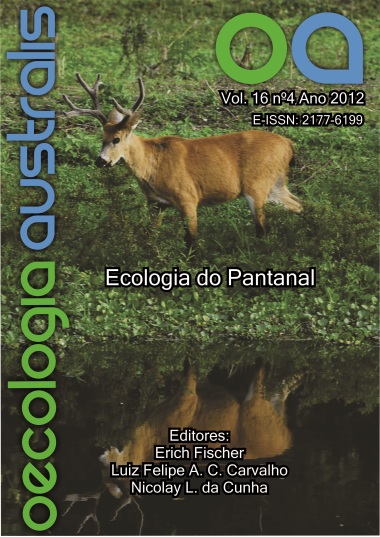SEASONAL PANTANAL FLOOD PULSE: IMPLICATIONS FOR BIODIVERSITY
Keywords:
biodiversity, conservation, ecological processes, environmental threats, Pantanal.Abstract
The Pantanal is fed by tributaries of the Upper Paraguay River in the center of South America, mainly in Brazil. The landscape is marked by contrasts between the seasonally floodplain (Pantanal) and the surrounding highland (Planalto). The floodplain regulates highland riverine discharge by temporarily storing water during flood season and can enhance water loss by evapotranspiration and infiltration. The flood level gradient creates a range of major habitats in a complex mosaic of annual and pluri-annual seasonal patterns. The Pantanal ecosystem is characterized by recurrent shallow water flooding near the surface of the substrate, due to the slow drainage of the vast plain inundated for longer, with variable conditions regarding to physical, chemical, and biological traits. Water discharge, geomorphology, type of soil and biodiversity are the main ecosystem components of the Pantanal. The complex vegetation cover and the seasonal productivity support a diverse and abundant fauna. Many endangered species still occur in health population conditions, including jaguar (Panthera onca). Waterfowl are exceptionally abundant during the dry season. Deforestation with the loss of natural habitats and their associated biodiversity in the Pantanal has been drastic during the last decades, particularly in the upland region of the Cerrado plateaus surrounding the flooding plain. Another threat is unsustainable agricultural and cattle ranching practices, which convert the natural vegetation into pastures and plantation crops such as soybean, especially on the surrounding plateaus where the river springs are located. Fires caused by humans are severe and have become part of the annual productivity cycle for cattle ranch owners. Recently there has been river flow modification due to implantation of small hydroelectric plants on the upland plateaus. The aim of this study is to put together a comprehensive report on the role of the flood pulse on the biodiversity using our research experience in the region and also reviewing published information.


